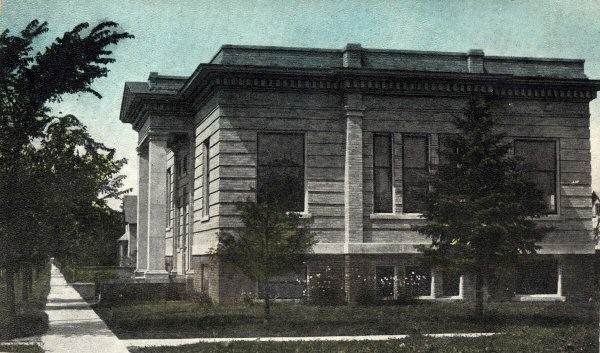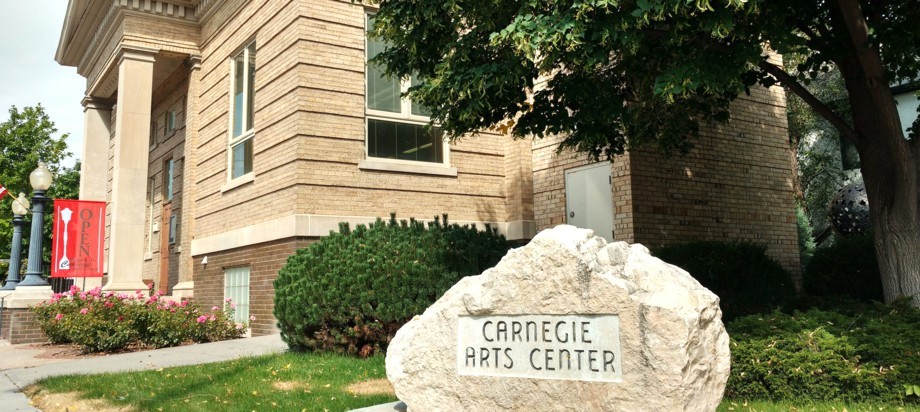It’s hard to imagine a world without free access to the unlimited knowledge offered by public libraries. But at the beginning of the twentieth century, this was not the reality but rather an audacious dream of the steel tycoon turned philanthropist, Andrew Carnegie.

It’s hard to imagine a world without free access to the unlimited knowledge offered by public libraries. But at the beginning of the twentieth century, this was not the reality but rather an audacious dream of the steel tycoon turned philanthropist, Andrew Carnegie. Before Carnegie started his grant program to build libraries all across the United States, easy access to books was largely restricted to those with enough money for a private collection or access to subscription services. People in different towns from all across Nebraska saw free access to books as an opportunity to make a lasting impact in their communities, so they set to work applying for grants to build Carnegie libraries. Of the 1,689 public libraries in the United States, 69 were in Nebraska. Towns who applied were responsible for providing the land, purchasing all of the books, and providing salaries for librarians. Women, especially ladies’ clubs, were oftentimes the driving force behind raising the necessary funds to match Carnegie’s grant. They found creative ways to raise money through events like box socials (box lunches would be auctioned off) that would bring the whole community together.
History Nebraska has been working hard to try and get as many of these ‘Carnegies’ listed on the National Register as we can. Today these buildings are not always suitable for continued use as libraries, but that does not mean that these treasures should be torn down. As we have traveled the state to see old ‘Carnegies’, we have been impressed by the creative new uses that communities have found for these buildings. It was a community-effort to construct these buildings and it oftentimes takes a community-effort to save them.

The Alliance Public Library in 1912
Carnegie libraries have always been a lot more than a place to store books. The communities who built these impressive little libraries were also concerned with providing people with access to culture. While the old Carnegie building in Alliance is no longer a library, it continues to provide people with opportunities for cultural enrichment. The Carnegie Arts Center has three galleries that attract outstanding artists from Nebraska and surrounding states. The group of Alliance artists and community members that rescued the building from demolition in 1980, took advantage of its open design to create a multi-functional space. The space has been used for yoga and groove classes, artist lectures, music performances, party rentals, weddings, and more.

The Alliance Carnegie Library is now the Carnegie Arts Center
Visitors to the Carnegie Arts Center oftentimes feel an instant connection with the building because it reminds them of the Carnegie library that they grew up visiting. Carnegie libraries from different communities oftentimes have a recognizable look because James Bertram, the secretary of Andrew Carnegie, reviewed the designs of proposed libraries and even offered guidance via a pamphlet, “Notes on the Erection of Libraries.” For those who grew up in Alliance, the building feels like an old friend. Before video games, television, and the internet, kids found all the entertainment they needed through the pages of books. It is oftentimes referred to as a gem of the community.

“The Arts People” by Dick Termes was commissioned by The Carnegie Arts Center and features several founding members inside the building.
Saving and then converting the building into an arts center has been a long and carefully thought-out process. After the Public Library moved to a new location in 1980, the old Carnegie sat vacant for seven years and started to deteriorate. It was purchased by the Carnegie Arts Center in 1987 and after extensive renovations, was opened to the public in 1993. To raise money for the renovations, community members, like their predecessors, found creative ways to bring the town together.

Before and after photos of the Carnegie Arts Center
One of the founders of the Carnegie Arts Center fondly recalls a fundraising event that featured an exhibit of Reynold Brown’s movie posters. Patrons visited the gallery and then were transported to the old theater in classic cars to watch a vintage film. After, the patrons returned to the center for a gourmet meal. The evening gave the feel of a 1950s night out on the town.

One of Reynold Brown’s movie posters
This connection with the past while looking forward to the future is one of the many reasons the old Carnegie building is a gem for Alliance. By giving the arts a place to call home, the Carnegie Arts Center has continued to honor the vision of those who worked so hard to give their community access to culture. To learn more about the National Register of Historic Places, click here, or reach out to David Calease at 402-613-1591 or [email protected].



